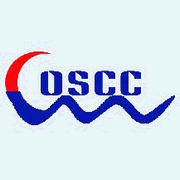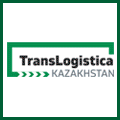AFRICANS are buying Chinese high tech electronic consumer devices as well sophisticated production machinery in large volumes without causing any disruption in the domestic producers market.
Low prices help drive the import growth, reports London's Financial Times, but product improvement, better local co-operation and high levels of Chinese African investment, totally US$13 billion in Africa since 2000, are factors too.
The classic complaint of third world products, that cheap imports obliterate domestic markets, is no longer the case for China, whose products though cheap, come from higher up the value chain and beyond local production capacity, the FT said.
"The African market is Chinese. They help us because it is the only one we can afford," shop assistant Eunice told the FT.
Chinese exports have more than tripled their market share in Africa since 2002, which supplied 16.8 per cent of the continent's total imports last year, according to a Standard Bank report.
Over the last four years, Chinese companies recorded their biggest gains in selling machinery, vehicles and electronics at the expense of European and Japanese rivals. African imports from Spain, Germany, Britain and Japan were all lower last year than in 2008 while imports from China surged 38 per cent in 2011 year on year.
Zhenjiang Shenglong Machinery Manufacturing (ZSMM), a middling farm machinery maker in Jiangsu province, started its business in Africa by contributing to aid missions.
Said ZSMM chairman Lou Min: "We were doing well in the Chinese market, but we realised that our products would die out domestically. We had to break into other underdeveloped countries, said Mr Luo, adding that this company made $3 million in Africa last year.
Source Shipping Gazette - Daily Shipping News
The Chongqing-Europe rail route and Chongqing-Shenzhen will be part of the Ministry of Railway's high-speed rail development plan in June.
The Chongqing-Xinjiang Europe railway takes 16 days, and Chongqing-Shenzhen run lasts 50 hours. Once high-speed rail is introduced, the Chongqing-Xinjiang Europe service frequency will be increased to two to three a week from the weekly service now offered and the transit cut to 14 days.
Last year, the Chongqing-Xinjiang Europe railway launched 17 runs, carrying 699 TEU of 970,000 laptops and 200,000 monitors manufactured in Chongqing.
Meanwhile, the frequency of the Chongqing-Shenzhen railway, which connects to Shenzhen's Yantian terminal, will be increased to twice daily at peak hours from two departures a week.
Source Shipping Gazette - Daily Shipping News
SHENZHEN International Holdings Limited has announced that profit attributable to shareholders in 2011 rose by 36 per cent compared to the previous year to HK$1,745 million (US$224.74 million).
The significant growth of the logistics business was mainly attributed to the successive openings and improved operational performance of new logistics centres as well as economies of scale benefiting from the expanded operating scale. In addition, enhanced operating efficiency and control of operating expenses were said to have enhanced the competitive edge of the group's logistics business.
Revenue for the 12-month period ending December 31 (excluding construction service revenue from toll roads) increased by 18 per cent year on year to HK$4.9 billion.
Profit before finance costs and tax from its core business amounted to HK$3,100 million, representing a growth of 35 per cent over 2010.
Within this total profit from its core business grew by 62 per cent over 2010 to a record HK$1,482 million, the group said in a statement posted by PRNewswire-Asia.
The increase in toll revenue was attributed to the "stable growth of the Chinese economy, the increase in the ownership of small-displacement vehicles, together with the completion of conversion works on existing roads and opening of extension section," the statement said.
With the group holding a 25 per cent stake in Shenzhen Airlines since April 2010, the carrier last year contributed a profit of HK$424 million to the group, up from HK$143 million in 2010. The group increased its equity interest in the airline to 49 per cent in January this year with the completion of the acquisition of an extra 24 per cent stake.
Of the future, Shenzhen International chairman Guo Yuan said: "The group will continue to increase its investment and explore in logistics sector and strive to turn the logistics business to become the main driver of the group's future growth. As the toll road business has become mature, the group will focus on developing the newly-completed projects so as to bring in relatively stable investment returns and adequate cash flow."
Source Shipping Gazette - Daily Shipping News
ANGOLA's second port of Lobit has been spending US$1.2 billion in state funds to increase its handling capacity to 11 million tonnes, it was announced by the port company Empresa Portuaria Do Lobito.
The funds have been used to build a dry dock for the handling of Lobito's containerships . Last year, the port 500 kilometres south of the capital Luanda, handled 88,000 TEU and 2.7 million tonnes of cargo.
The Government of Angola has invested the sum in the modernisation and expansion of the Commercial Port of Lobito, according to company chairman Anapaz de Jesus Neto.
Speaking at a ceremony to commemorate the company's 84th anniversary, Mr Neto said that the funds have been used to build a new import and export terminal in Lobito Bay for mining products, which is now nearing completion, reports the UK's Port Technology International.
The investment also covers the extension of the quay to enable the docking of 12 vessels simultaneously. Currently, Lobito can only handle eight ships at a time.
Angola's three main ports accessible by rail are Luanda, Lobito and Namibe
Source Shipping Gazette - Daily Shipping News
CARGOTEC has received a large order to supply 22 Kalmar straddle carriers to Australia's largest container handling operator Patrick container terminals for an undisclosed amount.
Twelve straddle carriers will be delivered to Patrick's East Swanson Dock in Melbourne between July and December 2012 and a further 10 to Patrick's Port Botany Terminal in Sydney between May and September 2012.
Cargotec said in a statement posted on its website that its Australian team will provide maintenance support to the equipment with spare parts supplied direct from its regional parts warehouse in Melbourne.
This latest order of 50-tonne capacity ESC 350W straddle carrier models continues a longstanding partnership between the two companies. The equipment provider said its team in Australia has provided over 120 Kalmar straddle carriers to Patrick container terminals over a period of 28 years. In total there are currently 108 units in operation across Patrick's sites in Brisbane, Sydney and Melbourne, which combined, handle 3.5 million TEU per year.
Systems based on Kalmar straddle carriers such as the ESC 350W are suitable for medium-size terminals handling between 100,000 and 4,000,000 TEU. Kalmar straddle carrier's 7+ generation models combine high performance and productivity with low maintenance and operating costs.
Designed with operators in mind, they deliver environmental benefits, which can be further enhanced with hybrid operation and can provide users with automation options.
Source Shipping Gazette - Daily Shipping News
VIETNAMESE mainline rail, running between Ho Chi Minh City and Hanoi was to be transformed into a high-speed link by 2013, but now official focus has been turned to providing container trains to and from the Hai Phong marine terminal.
The aim, reports the UK's Handy Shipping Guide, is to reduce truck volume to and from Hai Phong by increasing rail freight and it is hoped that railcars will carry 230 TEU a day by the end of the year.
But foreign investment is needed to bring this about, said the report. Discouraging this is Vietnam's differing rail gauges.
An Asian Development Bank (ADB) report said there was great potential for a rapid increase in rail freight, but since 1993, Vietnam as a major recipient ADB financing, has mostly used infrastructure funding on road building rather than rail, said the report.
But as the country becomes more prosperous, the need for better transport to power the economy will become more urgent and more widely appreciated, said the report.
While 60 per cent of Vietnam's container rail freight moves on the north-south line, 90 per cent of all freight is trucked, clogging highways, which are also subject to seasonal flooding.
Vietnamese shippers complain about rising container costs that have risen in recent weeks with a succession of rate hikes from most major carriers, said the report.
Source Shipping Gazette - Daily Shipping News
DACHSER, a family-run German logistics company, is banking that China-US trade will provide sustained growth for the company in coming years.
"We have seen some sluggishness during the last six months, but the US economy is showing positive signs of recovery and China is forecasting 7.5 per cent growth in its GDP in 2012," said Dachser Far East chief Edoardo Podest.
"China's imports have grown significantly during the last five years, driven by consumer demand and there has been a corresponding increase in imported goods from the US. A smaller portion of China's imports are of goods which will be processed for export, and a higher portion will go into domestic consumption," he said.
The global logistics provider has invested in building its network of offices in the US and China and offered value-added services - like logistics consulting, export and import compliance consulting or letter of credit services.
Imports to the US from China rose two per cent to 709,410 TEU in January when compared to the same month in 2011.
Source Shipping Gazette - Daily Shipping News
TNT Express has announced the opening of a new service point on Kemal Ataturk Avenue in Dhaka, Bangladesh. The outlet is located in Banani, a commercial and university district in the northern part of the city.
The new service point offers local businesses and residents "cost-effective solutions for sending documents and parcels to more than 200 countries. A specially-priced Student Pack is available to students who wish to apply to universities abroad," a company statement said.
The company said it owns 17 service points in Bangladesh, where it started operations in 1983.
Source Shipping Gazette - Daily Shipping News
ATLANTA based Delta Airlines maintenance unit has signed a multi-year exclusive agreement with Atlas Air to provide maintenance and support services for three of the company's Boeing 767-300ER aircraft.
"The men and women of Delta TechOps have a reputation for delivering the highest quality work and the most comprehensive support in the industry, which led to this new agreement," said Delta TechOps president Tony Charaf.
The new agreement includes 331 APU and CF6 engine time and materials maintenance support, and 767-300ER power-by-the-hour component support.
Said Atlas Air vice president Larry Gibbons: "Delta TechOps' operational experience with the 767 aircraft, extensive service offering, and status as a military airlift partner made them the obvious choice for this contract."
Mr Gibbons, head of procurement at Atlas Air, a subsidiary of parent company Atlas Air Worldwide, said: "We look forward to a strong working relationship with a one-stop service provider as we continue to enhance our innovative 767 freighter and passenger service solutions and complement our market-leading Boeing 747 freighter and passenger operations," he added.
Delta TechOps is the largest airline maintenance, repair and overhaul provider in North America, generating US$650 million in revenue in 2011.
Source Shipping Gazette - Daily Shipping News
THREAT detection technology provider Smiths Detection has unveiled its new, dual-view X-ray inspection system designed to meet the growing global demands of screening large cargo, pallets and freight items on both passenger and cargo aircraft.
The compact HI-SCAN 145180-2is is capable of screening objects up to 145 cm by 180 cm, meeting the maximum skid/pallet size allowed by the US Transportation Security Administration (TSA) and will join its 16 inspection units already on the TSA Air Cargo Screening Qualified Technology List (ACSQTL).
The dual-view capability speeds throughput by providing the operator with two high-resolution adjoining images, eliminating the need to scan twice to obtain the same information.
Said Smiths Detection president Mal Maginnis: "A smooth flow of air cargo is critical to the global economy. Our new, advanced Xray inspection system will allow shippers to screen bulk items without unpacking shipments, scanning individual boxes and then re-assembling the pallet or large shipment."
The HI-SCAN 145180-2is, which also features a highly compact footprint, will save customers time and money, he said in a company statement.
Source Shipping Gazette - Daily Shipping News
Iran will provide petroleum products to Tajikistan, said the Embassy of the Islamic Republic in Dushanbe on Friday.
President of Tajikistan Emomali Rahmon asked Iranian President Mahmoud Ahmadinejad for assistance to overcome the effects of last winter.
This week, Russia, at the request of the official Dushanbe, provided humanitarian aid to Tajikistan that have been delivered in three planes.
Source central asian news service
en.ca-news.org
HANJIN has launched a new shipping line to Europe calling at Tianjin's Euroasia International Container Terminal, Xinhua reports.
This is the third international shipping route started from Tianjin, using four 13,000-TEU and seven 10,000-TEU ships, offering one sailing a week, calling at Algeciras, Hamburg, Rotterdam and Le Havre.
Hanjin is the largest shipping company in Korea and the ninth biggest in the world. It has a fleet of 100 containerships with a total capacity of 483,000 TEU.
Source Shipping Gazette - Daily Shipping News
THE governor of Rizhao city, Yang Jun, says the port's throughput has reached 250 million tonnes and will hit 350 million tonnes by the end of the year, reported Xinhua.
According to Governor Yang, during the last four years, the eastern China port in Shandong province invested CNY11.5 billion (US$1.82 billion) on port facilities. This year, Rizhao will launch 200 projects with an investment total of CNY31 billion. The city government also plans set up an exclusive fund for port development.
Source Shipping Gazette - Daily Shipping News
A new domestic shipping lane to Taizhou has been launched at Guangdong province's port of Humen as the 15th domestic trade lane calling at the Dongguang facility, Xinhua reports.
The Qingdao's Defuchang Shipping Company, deploying 6,400-tonne ships , will call at Quanzhou in Fujian and Taizhou in Zhejiang province. The company's ships will start with a weekly sailing and will increase frequency based on market demand. Cargo can be shipped to Pearl River ports such as Shunle and Sihui via a feeder network at Humen.
Both Taizhou and Dongguan are manufacturing cities. Taizhou's energy, commodity and automobile industries are thriving, while Dongguan is known for the manufacturing IT products and furniture.
Source Shipping Gazette - Daily Shipping News
SOUTH WEST China's big manufacturing centre Chongqing recorded a waterway cargo volume of 8.31 million tonnes in February, 16.2 per cent more than in the same period in the preceding year but 6.4 per cent less than in January, Xinhua reports.
In the same month, port of Chongqing handled 9.48 million tonnes, a robust increase of 41.1 per cent compared to the same period in 2011, 8.6 per cent more than in January.
Source Shipping Gazette - Daily Shipping News
The magazine SEA has been published since 1935
International business magazine JŪRA MOPE SEA has been published since 1999
The first magazine in Eurasia in the four languages: English, Chinese, Russian and Lithuanian
|
|




.jpg)






